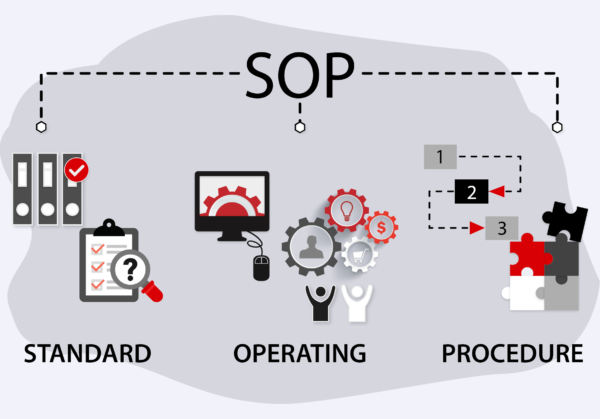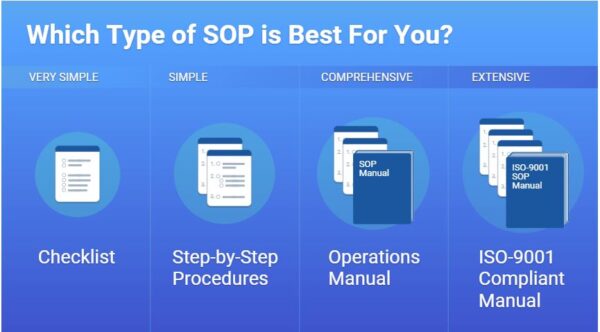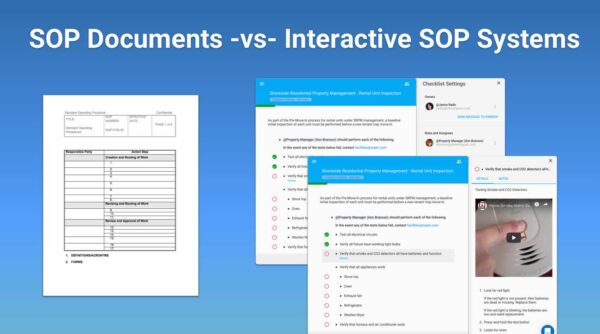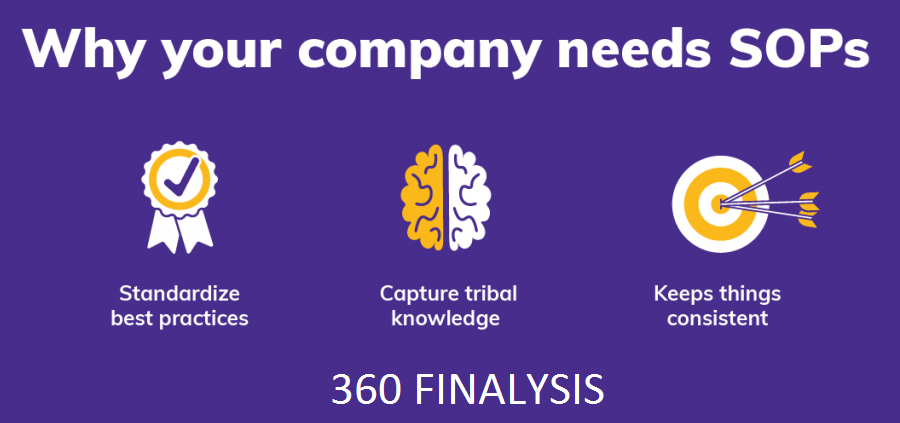"Business Operations and Boost Profits through Process Standardization"

Businesses who embrace repeatable, systematic processes tend to be more efficient, more scalable, and more profitable. Without efficient systems and well understood standard operating procedures, business teams are left to figure out how to get things done on their own. Accordingly teams must spend extra time figuring out how to get work done and even more time coordinating their efforts in ad-hoc, non-repeatable ways. Worse, when important steps are missed due to lack of a standardized process, quality suffers or additional costs must be incurred to redo the work. must be redone. Poor quality work tarnishes your brand, drives down customer retention, and can impact employee morale. None of that is good for business.

However, the solution is simple: Managers should standardize processes and automate them when possible to achieve optimal performance, higher productivity, and bottom line profits.
When a business is new or very small, it inherently lacks systems. However, at any time in the evolution of a business, managers must find ways to establish and optimize standardized processes to enable the business to grow. Creating processes that other people can repeat to produce high quality results and them automating and optimizing those processes is exactly how most businesses scale.
Throughout this article you will gain
- A deeper understanding of process standardization
- How process standardization will benefit your business
- Strategies for implementing process standardization
- How to achieve additional benefits by combining process standardization and process automation
What is process standardization?
Business Process Standardization is the practice of defining and enabling business teams to repeatedly use the same procedure to consistently and efficiently produce a high-quality outcome.
Business Process Standardization is often employed when business teams either lack a coherent process for their work, or different business teams who do the same type of work are using different processes for that work.
Standard Operating Procedures (SOP) is the documentation resulting from Process Standardization. Document your standard processes to facilitate training, meet compliance requirements, assure important aspects of work are given attention and done correctly, produce higher quality work, and guide the execution of the work though easy-to-follow step-by-step procedures.
What Business Problems Does Process Standardization Solve?
The benefits of standardized processes are numerous. Here are some of the business problems that process standardization help address.
Elimination of costly errors
Different team members go about their work in different ways. The result? Some work is high quality. Other work is not. If the company documents and trains staff to use the best process, then consistent high-quality outcomes can be achieved. Standardized processes can include “checkpoint” steps to verify aspects of the work meet quality expectations. For example, it may be critical for a Legal Department to review new marketing materials before they are used. If this step gets skipped, the consequences could be severe. A standard process that includes this level of detail helps team members executing the process avoid such issues.
Efficient high-quality execution
Processes often seem simple on the surface, but in fact rely on many details. When important details get missed, then work must be redone which delays getting things done and increases the costs involved to product the work. That’s bad. Documented standard procedures guide people through the steps and details to get things done right the first time. That saves the business time and money. If you outline your processes as step-by-step procedures or checklists.
Scalable training
Standardized processes are always documented. Often, when teams are small, they operate on “tribal knowledge” — processes that are culturally understood though habit and word of mouth, but not formalized. As an organization grows, it needs to train new team members as to the best way to produce great results. Documented standard procedures enable new team members to understand the best process to use to get things done. In turn, training becomes more efficient and the business can scale faster.
Change management
The standardized process you use today will likely evolve over time. New opportunities to optimize the process will be discovered. Regulatory requirements may require process changes. New products and services you delivery may require changes to previously established routines. Maintaining a central library of standardized processes gives you the ability to update procedures and communicate the key changes to everyone. However, changes to process documentation are only the first step. The changes must be made in systems which aid to automate the procedures. As such selecting software platforms that solve documentation and automation needs at the same time will enable you to operate more efficiently.
What Areas of Your Business Can Benefit from Process Standardization?
Management
How much of your time at work is currently wasted? Much of our time at work can be spent checking emails or chasing staff members. Younger employees will need advice and answers to their questions. Sometimes it can feel like all the admin gets in the way of doing any productive work at all. Good process standardization helps to remedy these issues. Employees have the information to hand that they need. If anything changes, they can be updated quickly to solve any potential issues.
Sales
The idea that great salespeople are born with their talent is not true. Certainly an outgoing, problem solving attitude is a great trait for any sales person, but most great sales people are also very disciplined about their time. They follow processes that make themselves highly productive uncovering new business, qualifying leads early and often, and leveraging their time to be able to focus on servicing customers with whom they can close near-term deals.
Marketing
Once target customers and value propositions for products and services are defined, many aspects of the campaigns and promotions designed to reach and motivate existing and prospective customers to act are somewhat procedural. The extent to which SEO campaigns, advertising, and publicity are managed systematically, the more focused and effective the campaigns become. For SEO alone the checklist-driven processes designed to make sure every detail, image, alt-tag, meta-data element, and link are optimized can be quite extensive even for a short blog post. For all marketing content and promotions procedures to assure on-message band consistency and legal compliance are followed are essential before money is wasted on campaigns that fail to meet these requirements.
Finance
Many accounting and bookkeeping processes are well understood. But as you grow coordinating that work across locations, branches, or even countries leads to greater complexity. Standardized processes are needed to define how and when information needs to be gathered and reported to produce monthly or quarterly statements and analyses for management, investors and other stakeholders. Documented, checklist-driven closing procedures provide clear expectations for everyone involved. Automated checklists, like those from TeamworkIQ, provide shared insight to across all the roles and activities required to reconcile and close the books each accounting period, payroll cycle, or retail week.
HR, Employee Retention
We know that much of what leads to stress in the workplace is miscommunication. Each employee needs to feel that they have the tools required to do their job at their best. With clarity in place, each employee can work efficiently and to the best of their ability. This leads to less incidents of poor-quality work and missed deadlines. Management feels more secure knowing that they can track the progress of their employees. A high-quality onboarding experience that’s shared across the company can lead to higher employee retention, greater job satisfaction, and higher productivity.
Innovation
Companies that maintain a competitive advantage are innovative. One of the greatest fears managers have about process standardization is that it can kill the creativity within the team. They believe that the processes will stifle the vision of the company. In fact, this couldn’t be further from the truth. The breathing room created through processes allows ideas to flourish. The best processes allow more time for employees to contribute their thoughts. In fact, as your processes become more developed, the creative value of your staff increases. Innovation speeds up and each staff member improves the business further.
Brand, Reputation, and Customer Service
Providing a great customer experience leads to long term advantages over competition. Happy customers whose expectations are met or exceeded will tell others about your business and that word of mouth leads to more customers. However, if deliverables are late or of poor quality, such referrals are far less likely and that leads to poor customer retention too. Whether it’s onboarding new clients or making sure work for customers is high quality, error-free and delivered on time, standardized processes can help build your brand, reputation, customer loyalty.
Virtually any organization or business department can gain instant benefits from process standardization.

How To Combine Process Standardization with Process Automation for Maximum Benefits
As organizations grow larger, quality and efficiency become increasingly more challenging to manage. To tackle such issues, business turn to process standardization. However, a strategy that combines process standardization with PROCESS AUTOMATION can yield even greater benefits, faster.
While some businesses still use paper documents in process binders or online documents to record and share standardized processes, the problem becomes that these reference materials are stored out-of-sight and out-of-mind rather than incorporated into the rhythm of ongoing operations. To execute the process, team members must remember the process and translate it into action. Often team members will kickoff a process in a meeting or by email, then create spreadsheets or manually entered tasks in todo list or project management software to track it all. Combined the process of executing the process is itself time consuming to set up and error prone as steps get overlooked or email messages get missed.
This problem can be solved by combining process documentation with automated process execution. When processes are automated, staff members performing the process are systematically guided through the steps. The automation system makes sure no step in the process gets missed and detects if work is on-time or behind schedule. It takes all the time, effort and cost out of manually having to move work forward manually and keeps everyone focused and on task.
The problem with most automation systems however is that the WORKFLOW for the process has to be built to meet the requirements of the process and then continuously kept-up-to date as the process evolves. But, imagine if you could instantly turn the process documents you already created into trackable, automated workflows for each time you needed to run a process. The cost to automate the process you just documented would be 1/100th the cost of automating it another way.
To keep your company moving forward efficiently, you need both process documentation and process automation in one, easy-to-use, integrated place.
- Recurring Processes
- Repeatable Workflows
- Standardized Procedures
- Procedural Checklists
- Inspection and Quality Assurance Checklists
- Ad-Hoc Tasks and Project Management
What do I need to get started?
- Start to document the process. You’ll need a general sense of the process you want to automate to get started. As soon as you start typing it up other details will come to mind. We suggest you document the process with our flowchart Template. That will save you time later. You can get a free Template at our website As soon as you do, sign-in and create a new process template. It’s designed to let you outline your process as a simple bulleted list. Use numbered bullets for step-by-step processes and regular bullets for work that can happen in any order or in parallel. Indent bullets to create subtasks. Assign parts of the outline to people or roles using the @ key. Add due dates and relative due dates just by typing phrases like “next Friday” or “3 days after {checklist started}”. Use these symbols to create placeholders for dates or text that you can set later. Remember you are creating a template to be used again and again, but with different values for the placeholders each time you run the process.
- Get feedback and refine the process. Ask other people involved in the process to help refine your draft. This will help capture knowledge and nuances that you might not otherwise be aware of.
- Put it into use and make updates as needed. It’s better to start with a reasonably thorough version of your process now than it is to delay and try to get it 100% perfect. Perfecting a process is not something that can be done in advance. It’s the act of using the process that will spawn more suggestions, insights and opportunities to refine it. If the cost of automating the process upfront was high, or the cost to make changes later was high, then getting it near perfect has its benefits. However, with 360Finalysis the costs are low and the time to make changes is minimal. Therefore, it’s better to get started and adapt as you go.
You can also do more with 360Finalysis
- Maintain and evolve a library of documented standard processes.
- Kickoff multiple live workflows from a single master standard process.
- Assign tasks and keep an eye on progress
- Monitor deadlines and set reminders
- Attach files, photo attachments, videos and links to help your staff
- Add approval steps and processes
- Add relevant comments, notes and data
- Add conditional logic to guide more complex processes
This article will help you on the making & define your company standard procedure in order to boots & increase your company.
Using information from Various website & references.








 CAclubindia
CAclubindia
